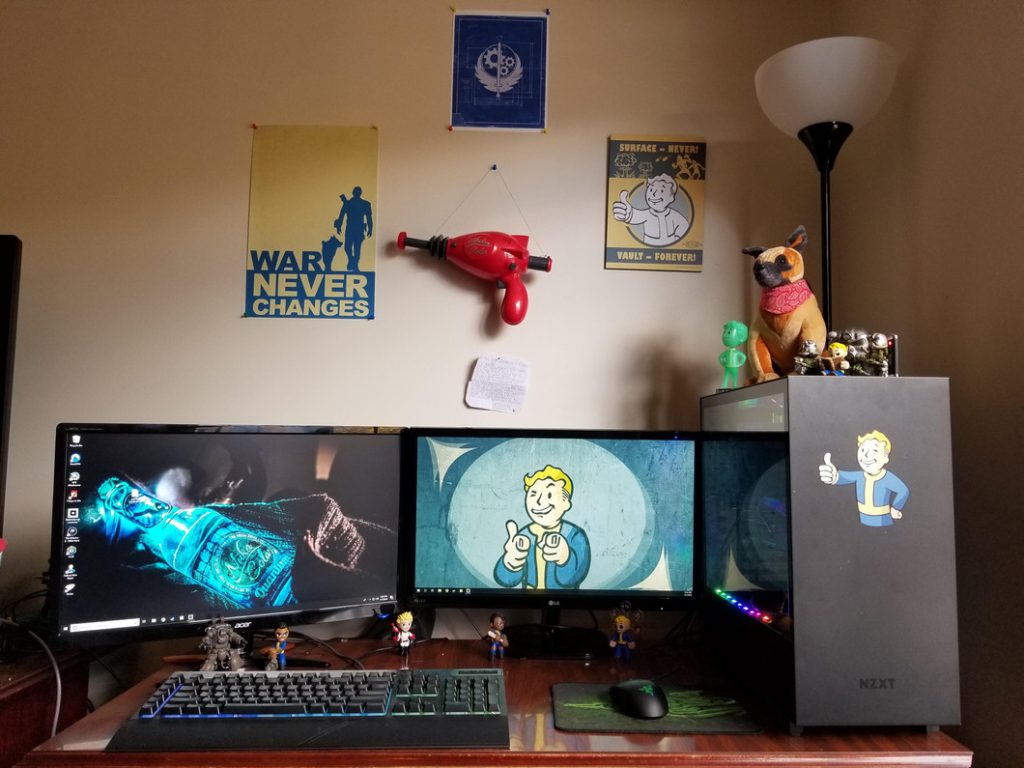Uncategorized
How to Optimize Your Computer Setup for Video Conferencing
In today’s world, video conferencing has become an essential tool for both work and personal communication. Whether you’re attending meetings, webinars, or virtual hangouts, having a well-optimized computer setup can make all the difference in how professional and productive your experience is. From video and audio quality to lighting and internet connection, each component plays a vital role. In this guide, we’ll walk you through the steps to optimize your computer setup for video conferencing, ensuring you look and sound your best every time.
1. Choose the Right Video Conferencing Software
The first step in preparing for a smooth video conference is selecting the right software. Popular options like Zoom, Microsoft Teams, Google Meet, and Skype have different features, so make sure you choose one that suits your needs.
Here are a few tips to consider:
- Software Compatibility: Ensure the video conferencing software you plan to use is compatible with your computer’s operating system.
- Latest Version: Always keep the software updated to take advantage of new features and security updates.
- Test Runs: Before important meetings, do a test call to familiarize yourself with the software and ensure everything works seamlessly.
2. Invest in a High-Quality Webcam
A clear and professional video image is crucial for making a good impression in video conferences. Many computers come with built-in cameras, but the quality can often fall short.
Why You Need a Good Webcam:
- Better Resolution: A 1080p webcam provides high-definition video quality, making you look more polished and professional.
- Autofocus and Low-Light Compensation: Look for webcams that have autofocus and low-light correction features. These ensure that you’re always in focus, even in poorly lit rooms.
- Wide-Angle Lens: For a more natural look, opt for a wide-angle lens webcam that captures a larger area, allowing you to show more of your surroundings if needed.
Recommended options include the Logitech C920 or the Razer Kiyo, which offer excellent video quality for the price.
3. Upgrade Your Microphone for Clear Audio
Clear audio is just as important as video quality in a successful video conference. While built-in microphones can suffice for informal chats, investing in a dedicated microphone significantly improves audio quality.
Options to Consider:
- USB Microphones: Plug-and-play microphones like the Blue Yeti or Audio-Technica ATR2500 are great options for clear and professional sound. They are easy to set up and provide crisp audio for meetings.
- Headsets: If you prefer a more compact solution, a good quality headset with a built-in microphone can provide noise-canceling features, making it easier for others to hear you clearly, even in noisy environments.
- Lapel Microphones: For those who prefer a more discreet option, a lapel mic (clip-on microphone) can deliver clear sound while maintaining mobility.
Make sure to test the audio before important calls to ensure the microphone is working correctly and at the right volume.

4. Ensure Proper Lighting
Good lighting is crucial to ensuring that you look your best on camera. Poor lighting can result in dark, unflattering images or cause your face to blend into the background.
Tips for Optimal Lighting:
- Natural Light: Position yourself facing a window or another natural light source if possible. Natural light is soft and flattering, helping you appear more vibrant.
- Ring Light: If natural light isn’t available, invest in a ring light. These lights are designed specifically for video calls and provide even, shadow-free illumination.
- Avoid Backlighting: Ensure there are no bright light sources behind you (like windows or lamps), as they can create a silhouette effect and make it hard to see your face clearly.
- Adjustable Lighting: Look for a softbox or adjustable LED lights if you need more control over the intensity and direction of your lighting.
Aim for lighting that is bright but soft, illuminating your face without causing harsh shadows or glare.
5. Optimize Your Internet Connection
A strong and stable internet connection is vital for a smooth video conferencing experience. Lagging video or dropped calls can disrupt your meeting and leave a bad impression.
Ways to Improve Internet Speed:
- Use a Wired Connection: For the most stable connection, connect your computer directly to the internet using an Ethernet cable. This can prevent connection issues that are common with Wi-Fi.
- Upgrade Your Router: If you must rely on Wi-Fi, make sure your router supports the latest Wi-Fi standards (e.g., Wi-Fi 6). Consider upgrading to a dual-band router to separate the traffic between devices.
- Reduce Bandwidth Usage: Close unnecessary applications, especially those using the internet, such as streaming services, downloads, or cloud backups, to ensure maximum bandwidth for your video conference.
Check your internet speed using tools like Speedtest to ensure you meet the recommended speeds for video calls, typically 3–4 Mbps for HD video.
6. Tidy Up Your Background
Your background plays a big role in your professionalism during a video conference. A clean, tidy space reflects positively on you and minimizes distractions.
Tips for a Professional Background:
- Neutral or Blurred Backgrounds: Consider using a simple background or a professional virtual background if you’re working from home. Many video conferencing platforms, such as Zoom, allow you to blur or change your background to maintain privacy.
- Declutter Your Space: Remove any items that might distract others, such as personal photos, laundry, or piles of paperwork. A minimalist background is ideal for a professional look.
- Lighting Placement: Be mindful of where your light source is. If it’s behind you, it can cast unwanted shadows and make you appear less visible. Make sure your light source is in front of you to avoid this.
If you’re in a less-than-ideal setting, you can always use a background screen or digital background to mask your environment.
7. Use a Comfortable Chair and Desk Setup
Video conferencing often involves long meetings, and sitting for extended periods can cause discomfort. A good ergonomic setup is essential for comfort and focus.
Key Considerations for Ergonomics:
- Chair: Choose an ergonomic chair with good lumbar support to keep your back aligned. Your feet should be flat on the floor, with your knees at a 90-degree angle.
- Desk Height: Make sure your desk is at a height where your arms rest comfortably at a 90-degree angle while typing or using a mouse.
- Camera Position: Adjust your camera so it’s at eye level to avoid awkward angles. You can use a laptop stand or adjustable desk mount for your webcam to achieve this.
By optimizing your physical workspace, you’ll not only feel more comfortable during video calls but also appear more professional.
8. Test Your Setup Before Every Call
Lastly, always do a quick test before important meetings to make sure everything is working as expected.
- Video and Audio Check: Ensure your webcam and microphone are turned on and positioned correctly. Test the video and audio quality to ensure they are clear and well-lit.
- Internet Speed Test: Run a quick speed test to make sure your internet connection is strong and stable.
- Background and Lighting Test: Adjust your lighting and background, making sure they’re optimal for the call.
Setting aside a few minutes before each meeting to check your setup will save you from last-minute issues.
Conclusion
Optimizing your computer setup for video conferencing is all about ensuring the best video, audio, lighting, and connectivity for a smooth and professional experience. By following the steps outlined in this guide, you’ll improve your productivity and present yourself confidently in every video call. Whether you’re working from home, attending online meetings, or connecting with family and friends, a well-prepared setup can make a world of difference.



